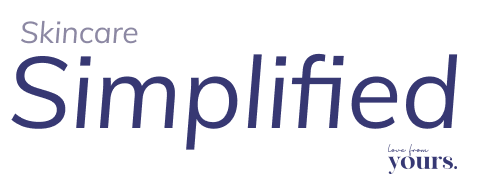You may have noticed a lot of colourful acne face maps milling about on social media. Most of them are in reference to the practice of ‘face mapping’ – an ancient Ayurvedic and Chinese practice which claims that acne breakouts in different zones of your face are triggered by health issues from other organs in your body (such as your lungs and liver). However, there is little to no scientific evidence that backs this information, and a lot of it is just hearsay.
Yet, it’s no secret that different types of acne appear all over your body and breakouts often recur in specific areas. For example, you may notice acne clusters in particular areas of your face during certain times of the month, or after eating certain types of food.
So, where your acne appears and why it appears there is in fact not random, and understanding the origins of your breakouts truly is key to getting rid of them. Let’s take a look at the most common breakout areas and a more practical approach to face mapping.

Cheek Acne: Dirty phones and pillowcases
Your daily lifestyle habits are the likeliest culprits for cheek acne. Here’s the thing: friction and rubbing exacerbate acne, and every time you touch your cheeks or hold your phone against them, the chances of a breakout increase tenfold.
On average, we touch our face around 23 times per hour, and research has shown that our phones are often covered in more bacteria than some public toilets! That’s why it’s super important to wash your hands often and to disinfect your phone regularly.
On top of that, dead skin cells, oil and bacteria build up on your pillowcases over time, again leading to breakouts. So make sure to switch out your pillowcases regularly too, and wash them in hot water to disinfect them properly.
“Your hair products could be the main culprit for breakouts on your forehead.”
Forehead Acne: Irritating hair products
First and foremost, your forehead has a high concentration of oil-producing glands. This means it’s naturally a lot oilier than the rest of your face, which can lead to oil build-up, clogged pores and breakouts.
However, acne clusters in this area could also be related to your digestive system and high amounts of fat in your diet. Try cutting out sugary, processed and oily foods (such as deep-fried foods), and drink lots of water to help flush out the toxins in your system.
Additionally, acne around your hairline could suggest your hair products are irritating your skin. Shampoos, conditioners, pomades, hair sprays and hair oils often contain large amounts of pore-clogging ingredients such as sodium lauryl sulfate, silicone, and coconut oil. And when these ingredients come into contact with your forehead, through your hair or when styling, they can irritate your skin and clog your pores.
If you often notice acne in this area, try switching to clean beauty (non-toxic) hair care products, and cleanse your forehead with a gentle face cleanser after doing your hair each morning.



Nose Acne: Natural excess oil production
Your nose areas also naturally has more sebaceous glands (oil-producing glands) compared to the rest of your face. This is why you’ll often find more acne around your nose including blackheads and whiteheads.
Additionally, you’re more likely to sweat through your nose, and unknowingly touch this area throughout the day. This means your nose can become a breeding ground for bacteria, leading to breakouts.
Avoid touching your nose as much as possible throughout the day, particularly if your hands are sweaty or dirty. Plus, cleanse your face as soon as you get home from a day out, and opt for a light day time moisturiser to protect your skin from bacteria and keep it hydrated all day (hydration is key to minimising excess oil).



Chin Acne: Hormone-related
Ever notice more zits and pimples around your mouth and chin right before your period? Breakouts in this area of your face are often hormone-related. Fluctuations in your hormone levels can be triggered by stress, your menstruation cycle and pregnancy, leading to increased sebum (oil) production, (which almost always leads to clogged pores and breakouts).
Find ways to de-stress around your period or after a stressful day at work to reduce your chances of breaking out (think bubble baths, face masks, soothing music, reading). Additionally, steer clear of dairy products (as this is known to trigger breakouts!) and try to incorporate more antioxidant-rich foods into your diet including sweet potato, fish, almonds and citrus fruits.
Back Acne: sweat and tight clothes
Back acne is not widely spoken about, however, it’s pretty common—so much so that it has a name for itself—bacne. Bacteria thrive in warm, moist environments (sweat!). So, if you don’t clean up promptly after a workout, or you wear tight clothing in hot and humid environments, your back may end up breaking out. Heavy backpacks, bag straps, and tight bra straps are also common acne culprits as they can irritate your skin further.
You can tackle bacne by exfoliating with a gentle chemical exfoliant once or twice a week (yup, you can exfoliate your back just like you exfoliate your face!). This is an important step as it buffs away dead skin cells, dirt and oil build-up that clogs your pores, thus reducing your chances of breakouts. Additionally, make sure to take regular showers if you sweat often or right after working out, and wear loose clothing as much as possible so as not to irritate your breakouts.
“Tight clothing, heavy backpacks, and a sweaty back are common culprits for bacne”
Maskne: the new-age acne culprit
In a post-covid world, a new acne culprit is arising – maskne. With face coverings and masks now an essential preventative measure against the coronavirus, you may find that regular mask usage is leading to increased breakouts around your nose, mouth and chin.
No matter what kind of face mask you choose, friction happens when the fabric constantly rubs against your skin, leading to irritation. On top of that masks can become a breeding ground for bacteria if worn for too long or if not washed properly. Your skin can become easily sweaty and moist under a face mask and gunk from pollution can build up over time.
Opt for cotton reusable face masks which let your skin breathe, and discard single-use face masks as soon as they become damp (at the end of each day!). Additionally, cleanse your face before and after using a face mask and moisturise generously to protect and soothe your skin.



Knowing the origins of your breakouts is always important to get to the root of the problem, however, no matter where your pimples are, the key thing to remember is acne is always a result of clogged pores. The best ways to fight acne anywhere on your body include regular cleansing to get rid of dirt and bacteria, weekly exfoliation to get rid of dead skin cells and to unclog your pores, an antioxidant-rich diet to tackle acne from the inside out, and staying on top of healthy lifestyle habits (like cleaning your phone regularly!).
Above all, sticking to an efficient skincare routine is one of the most effective ways to fight acne. Avoid skincare products with toxic ingredients, as these can often disrupt your hormone levels and lead to irritation, and instead, look to clean beauty products that won’t irritate your skin!
If you’ve tried everything and you’re still stuck with acne breakouts, we’re here to help. Take our quick skin assessment and we’ll take your skin, lifestyle and environment into account to create a personalised (clean beauty) skincare regimen that will tackle all your skin needs.
Related Stories
Top 5 Detox Foods For Acne-prone Skin
The Importance of Exfoliation for Acne-Prone Skin
5 Ways You’re Making Your Acne Worse
Not Sure How to Get Started? Try Yours for Acne-Free Skin:






